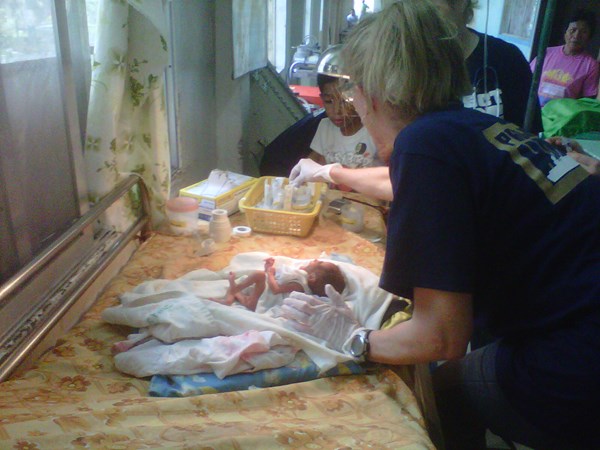MILLWOOD, VA., Dec. 7, 2013 (GLOBE NEWSWIRE) -- A month after Typhoon Haiyan tore through the Philippines, Project HOPE volunteers in the disaster zone say aid and medical care are still desperately needed.
The super storm decimated the medical infrastructure of worst hit regions, destroying hospitals and clinics, compromising even basic care services. The young are especially at risk, according to Project HOPE's medical teams on the ground. The storm, which devastated families as it killed more than 5,000 people, left mental trauma in its deadly wake, and is spurring a need for counseling services and resiliency support for survivors.
"People are still coming to grips with the destruction and the loss of their homes and in some cases, their families. We see vulnerability everywhere, including the Tapaz Municipal Hospital on the remote Panay Island, which is trying to operate without a roof, electricity and running water," said Matt Peterson, Senior Manager, Volunteer Operations, who helped coordinate HOPE's response to the crisis.
"Most people thought it was the end of the world," said Tapaz hospital chief Dr. Jean Aposaga Gloria. "Our employees are severely overworked and stressed out," said Gloria, describing how those on duty the day of the typhoon had to remain working for three days because the next day's staff couldn't make it through the debris-filled roads and paths to work. "Ten of our employees had completely destroyed homes. Everyone had some damage. All of them are victims yet still have to perform their duties and somehow cope."
The storm may be fading from global headlines but Project HOPE is determined to stay as the immediate rescue mission winds down, committed to rebuilding core health services on Panay Island in the Western Visayas region and to work with local authorities to establish a second medical volunteer site on the Camotes Islands surrounding Cebu in central Philippines, where help is needed to reconstruct three birthing centers, and health professionals are needed at a district hospital.
"We're teaching local medical staff how to deal with emergency cases each day. I was thrilled to assist a newborn delivered last week at 29 weeks gestation, about two months premature and extremely vulnerable. Her IV came out and we convinced the doctor to start tube feeding the infant. The teaching we're doing each day will have an impact well after we leave," said Project HOPE volunteer Medical Director and OB nurse, Colonel (Air Force retired) Beth Harrell.
Project HOPE also delivered over $1.6 million in donated medicines, generators, first aid kits, and surgical equipment to remote hospitals and health facilities in and around Bogo City, the Daan Bantayan district on the island of Cebu, and Tapaz. HOPE anticipates further shipments of aid in the weeks ahead.
In the early weeks of the disaster, Project HOPE had medical liaison teams with the U.S. Navy's Component Command and Control Leadership aboard the USS COWPENS, and on a second amphibious ship to provide front-line coordination and communication.
Project HOPE first visited the region over 50 years ago, aboard the SS HOPE, the world's first peacetime hospital ship. Project HOPE has played a crucial role in saving lives in regions hit by natural disasters over much of the last decade, in Haiti, Indonesia, Japan, China and other parts of Southeast Asia. HOPE is currently involved in global health education in several countries in the region.
About Project HOPE
Founded in 1958, Project HOPE (Health Opportunities for People Everywhere) is dedicated to providing lasting solutions to health problems with the mission of helping people to help themselves. Identifiable to many by the SS HOPE, the world's first peacetime hospital ship, Project HOPE now provides medical training and health education, as well as conducts humanitarian assistance programs in more than 35 countries. www.projecthope.org
A photo accompanying this release is available at: http://www.globenewswire.com/newsroom/prs/?pkgid=22580
